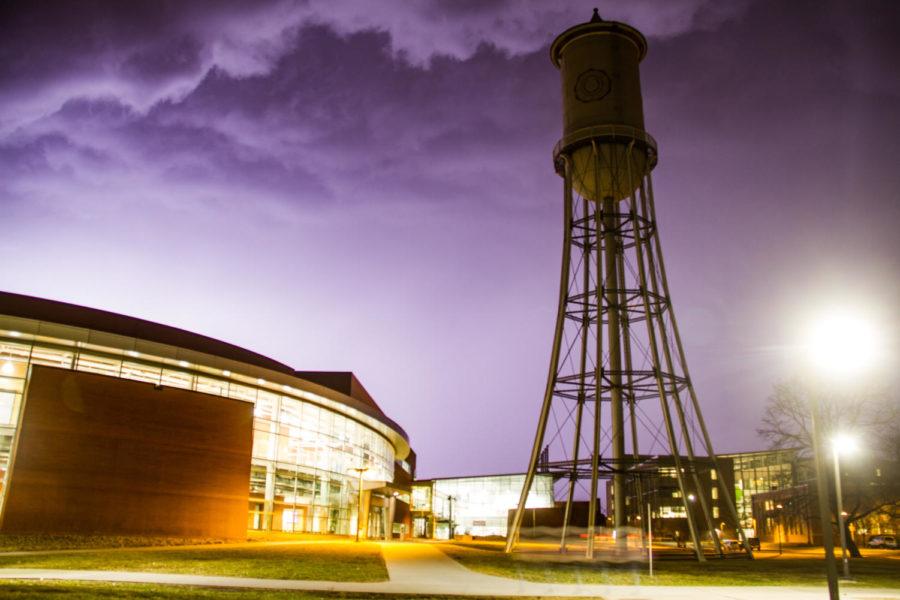How to: weather spotting
Storm clouds roll through campus during the late afternoon of March 6. The storm hit around 6:30 p.m, after a day of wind warnings and tornado watches.
April 9, 2018
The National Weather Service’s SKYWARN Program involves over 350,000 volunteers across the United States who all pass on and provide critical severe weather information to the National Weather Service to help deliver the public faster and more accurate severe weather information.
Monday, the National Weather Service hosted a spotter training seminar on Iowa State’s campus explaining all the do’s and don’ts on how to safely and effectively call in severe weather during the event of a storm.
Rod Donavon a National Weather Service professional, shared tips, stories, and techniques to a room full of Iowa State Students and Iowa State community members while also reminding them of all the dangers that are involved in storm chasing.
Below are just some of the tips he shared to help you get started storm spotting.
Tips to stay safe during severe weather:
• Stay informed for severe weather warnings in your area
• Stay in your vehicle
• Don’t assume the National Weather Service or local news knows everything, be proactive when you see signs of severe weather.
What to Report
• Damaging winds (anytime there are falling branches or structure damage or winds over 50 mph)
• Funnel clouds and rotating wall clouds
• Tornadoes
• Hail of any size
• Ice accumulation and/or dangerous road conditions.
• Flash flooding
How to get started
• Call 800-759-9276 or 800-SKYWARN
• Text 515-240-5515
• Email [email protected]
• Download the “mPing” smartphone app
• Online weather reporting form can also be found at http://go.usa.gov/c5D6Y
“Pictures are worth a thousand words, please help us out,” Donavon said.
Weather spotters are volunteers and all spotters volunteer at their own risk, with the height of the tornado season approaching please remember to be safe.
To register as an official NWS spotter visit http://www.midiowaskywarn.com or for more information visit www.weather.gov.







